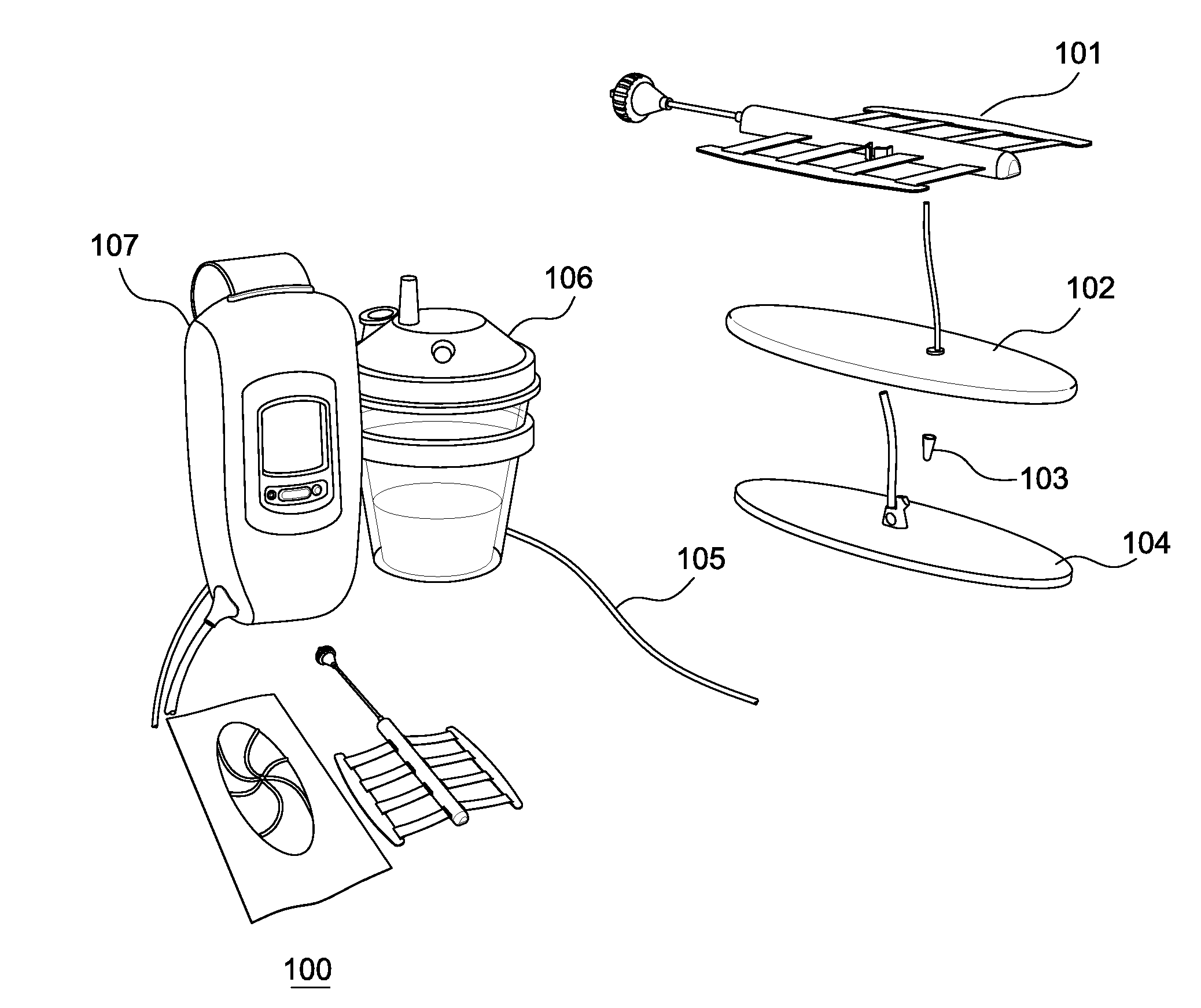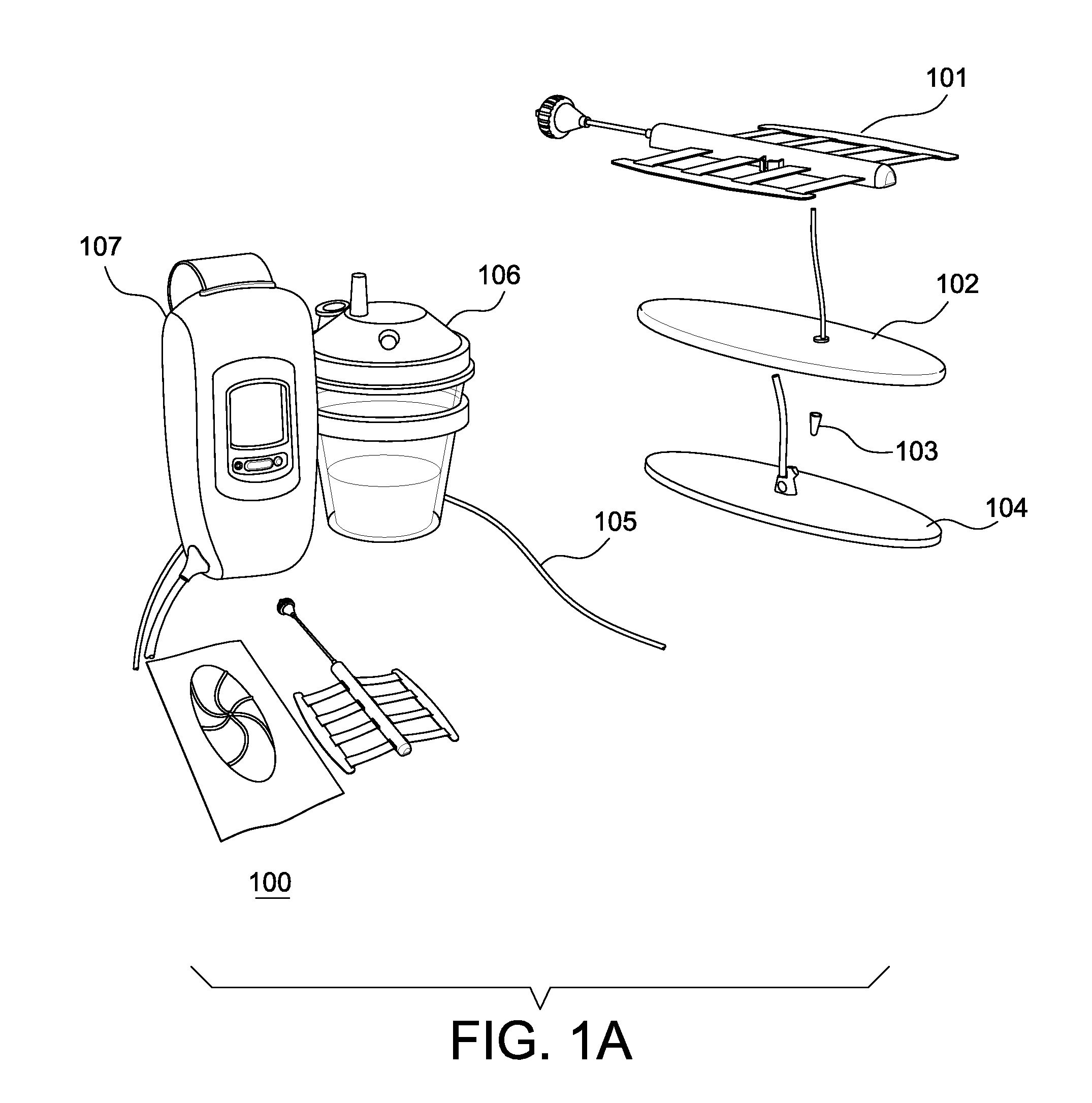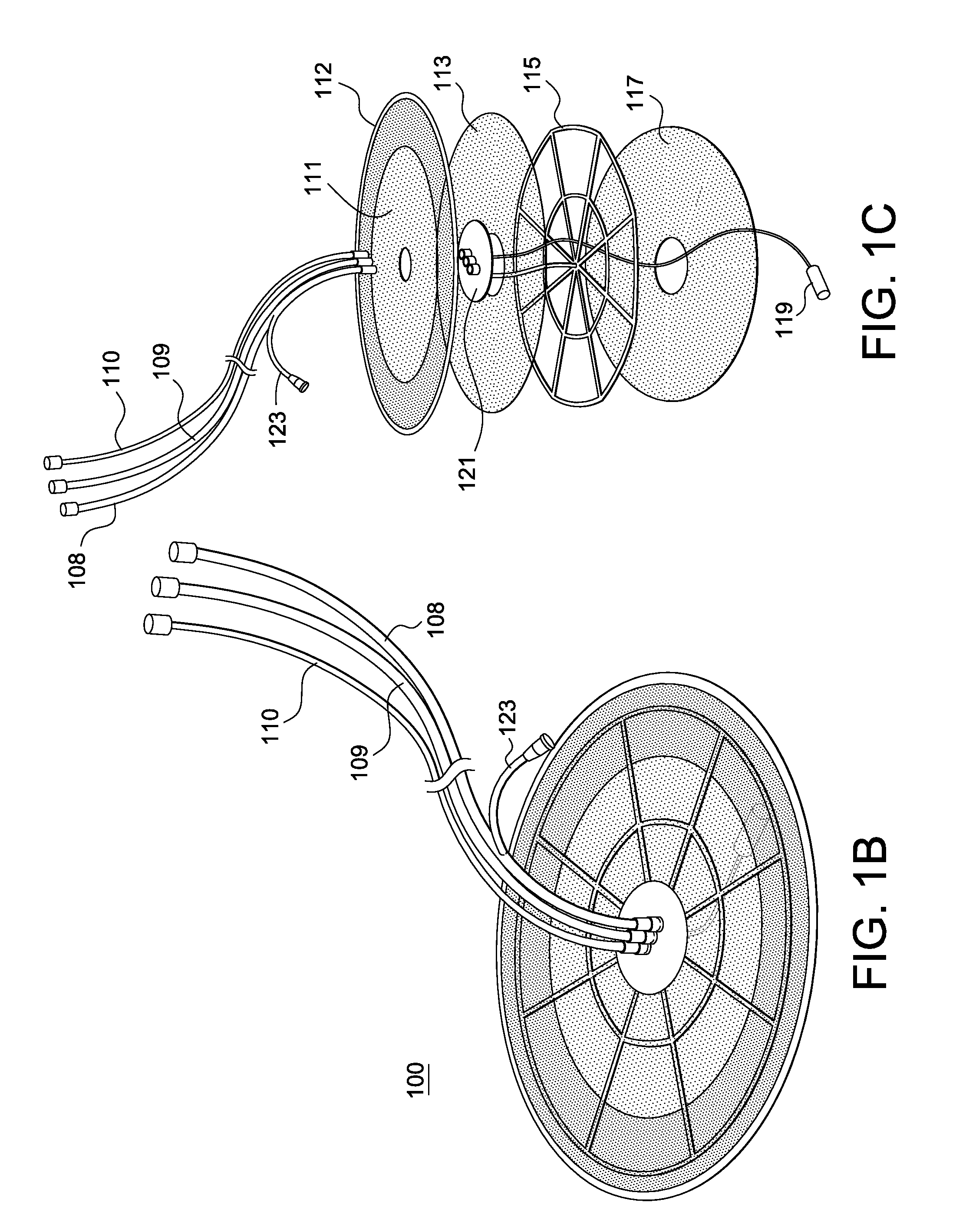Mechanical Wound Therapy for Sub-Atmospheric Wound Care System
a mechanical and sub-atmospheric technology, applied in the field of patient wound care, can solve the problems of inability to provide this mode of wound cleansing, inability to readily perform modern wound care elements, and inability to provide this mode of wound care, so as to reduce the need for additional surgical debridement, reduce the risk of infectious complications, and effectively treat specific wounds.
- Summary
- Abstract
- Description
- Claims
- Application Information
AI Technical Summary
Benefits of technology
Problems solved by technology
Method used
Image
Examples
Embodiment Construction
[0054]The present inventors recognized that the management of open wounds from trauma or disease, with the assistance of NPWT, benefits from the application of multiple features of the embodiments disclosed herein. From the time the wound is created it is beneficial if several interim activities occur prior to the final step in wound care, definitive soft tissue management. These interim activities include irrigation and debridement, minimization of microbial load, monitoring of the wound and sequential approximation of the wound—that is, closing of the wound—to the extent possible.
[0055]Typically, it is recognized that a wound care system cannot act completely independent of provider directed wound care. Surgical irrigation, gross wound decontamination, and debridement will remain the hallmarks of initial wound care in the foreseeable future. However, the present inventors recognized a number of improvements that aid in the development of a robust MWT integrated systems. Various em...
PUM
| Property | Measurement | Unit |
|---|---|---|
| Length | aaaaa | aaaaa |
| Length | aaaaa | aaaaa |
| Length | aaaaa | aaaaa |
Abstract
Description
Claims
Application Information
 Login to View More
Login to View More - R&D
- Intellectual Property
- Life Sciences
- Materials
- Tech Scout
- Unparalleled Data Quality
- Higher Quality Content
- 60% Fewer Hallucinations
Browse by: Latest US Patents, China's latest patents, Technical Efficacy Thesaurus, Application Domain, Technology Topic, Popular Technical Reports.
© 2025 PatSnap. All rights reserved.Legal|Privacy policy|Modern Slavery Act Transparency Statement|Sitemap|About US| Contact US: help@patsnap.com



